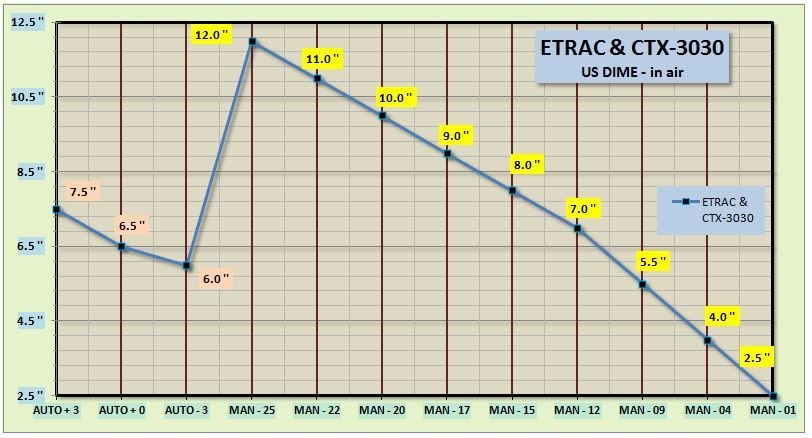Hi guys,
Still getting used to my 3030. I was at an old school not long ago and found a 1913 merc dime. I could see a blip of red on the screen in the dime range and it was down about 5-6 inches.
I read Andy's book and started a test garden today. I planted a quarter at 9 inches flat into the hole. The 3030 would get sporadic readings from 10:31 - 11:35 - 12:47 but never a tone on the machine at all. I could never get a steady reading and if I was out digging somewhere most likely I would skip over this as there are no tones. Is there some setting I am missing to hear this tone, a lot of people say they use the 3030 and never really have to look at the screen, just rely on tones which I always thought to be true until that dime I dug up with no tone and tonight when I couldn't get it to hit on it.
Even at 7 inches I hardly got any tones, maybe a faint one after swinging and doing 360's around the hole. The ID number was very off as well at 7 inches. It makes me wonder how many good targets I am actually missing and what I can do to correct this.
Still getting used to my 3030. I was at an old school not long ago and found a 1913 merc dime. I could see a blip of red on the screen in the dime range and it was down about 5-6 inches.
I read Andy's book and started a test garden today. I planted a quarter at 9 inches flat into the hole. The 3030 would get sporadic readings from 10:31 - 11:35 - 12:47 but never a tone on the machine at all. I could never get a steady reading and if I was out digging somewhere most likely I would skip over this as there are no tones. Is there some setting I am missing to hear this tone, a lot of people say they use the 3030 and never really have to look at the screen, just rely on tones which I always thought to be true until that dime I dug up with no tone and tonight when I couldn't get it to hit on it.
Even at 7 inches I hardly got any tones, maybe a faint one after swinging and doing 360's around the hole. The ID number was very off as well at 7 inches. It makes me wonder how many good targets I am actually missing and what I can do to correct this.






